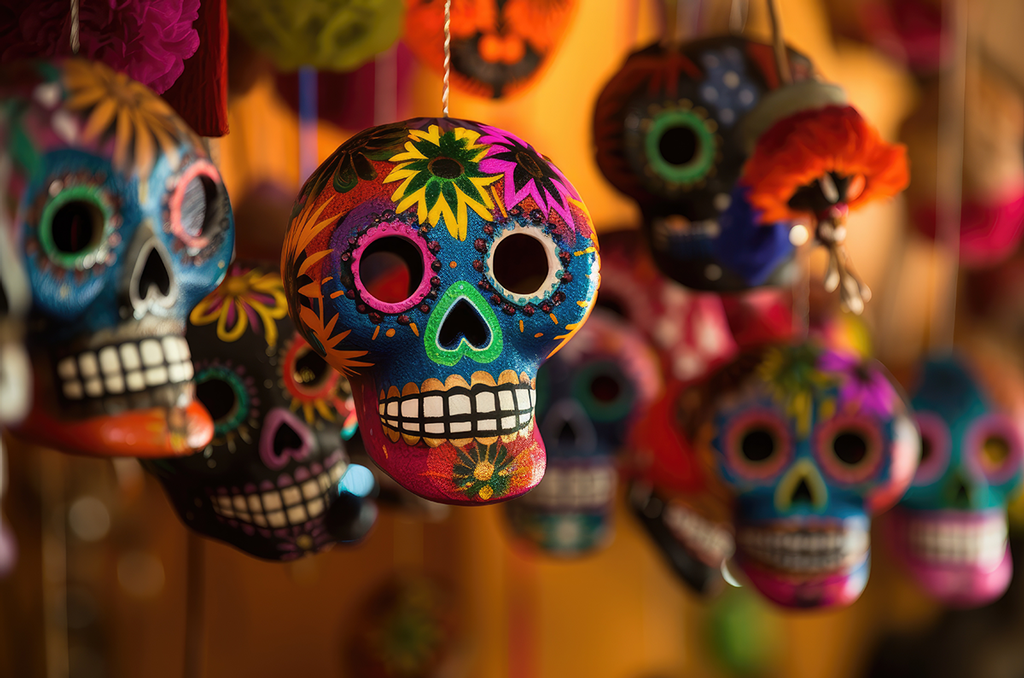
Mexico’s Day of the Dead: A Sensory Celebration of Life and Remembrance
- foodfightadmin
- November 1, 2023
- Events, Holiday
- rsc pages, rscl
- 0 Comments
In the bustling heart of Mexico City, the Day of the Dead unfolds as a vibrant tapestry of smells, tastes, sounds, and sights, celebrating the delicate bridge between the living and the deceased. This ancient tradition, deeply rooted in pre Hispanic cultures, has evolved into a multisensory experience, encapsulating the essence of Mexican heritage and spirituality.
The air during this time is rich with the fragrant blend of cempasúchil flowers and copal incense, guiding spirits back from the underworld. Verenice Arenazas, who left her corporate job for her family’s traditional flower field in Xochimilco, describes the cempasúchil’s aroma as a potent symbol of Mexican pride and the tireless efforts of local farmers.
Food, a central element on the traditional altars, represents Mother Earth’s bounty and the connection to the ancestors. The offerings range from sweet breads, believed to have ancient origins involving honey and blood, to the deceased’s favorite meals. Gerardo Ramírez, despite his diminishing eyesight, emphasizes the spiritual communion during this festival, where the essence of the food is believed to be consumed by the returning souls.
Altar preparation is an art in itself, a celebration of craftsmanship and creativity. Essential to these altars are “papel picado,” delicate paper cut-outs representing the union of life and death. Yuriria Torres, a local artisan, continues the traditional handcrafting process, creating scenes of dancing skeletons and festive skulls, a nod to both Indigenous and foreign influences.
The Day of the Dead is not just a visual spectacle; it’s a musical journey as well. José García, a shoe shiner from a township near Mexico City, recounts how mariachi bands play over decorated tombs in cemeteries, bringing to life the favorite songs of the departed. This practice, once exclusive to the affluent, is now a communal experience, with people bringing their own music to share in the celebration.
Photos of departed loved ones hold a place of honor on the altars, amidst a kaleidoscope of colors symbolizing various aspects of life, death, and faith. The celebration extends beyond personal remembrance to collective memory, with altars in public spaces paying tribute to historical figures, social causes, and even international events, like those at the National Autonomous University of Mexico.
In essence, the Day of the Dead transcends the physical realm, inviting participants to connect deeply with their past, their culture, and the enduring spirit of their ancestors. As Ramírez poignantly notes, this connection is not taught but is ingrained in the very DNA of those who partake in this timeless tradition.








